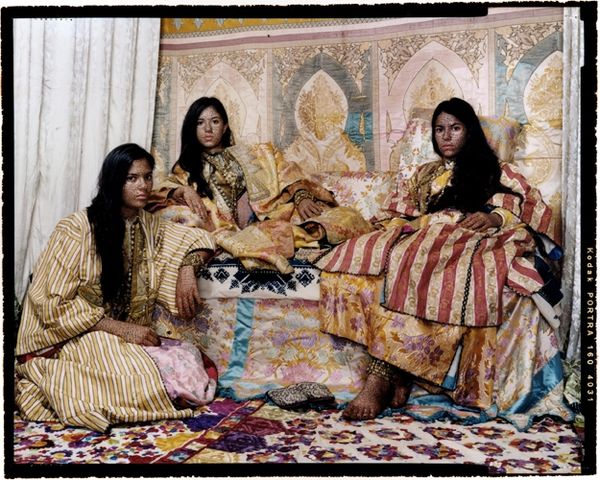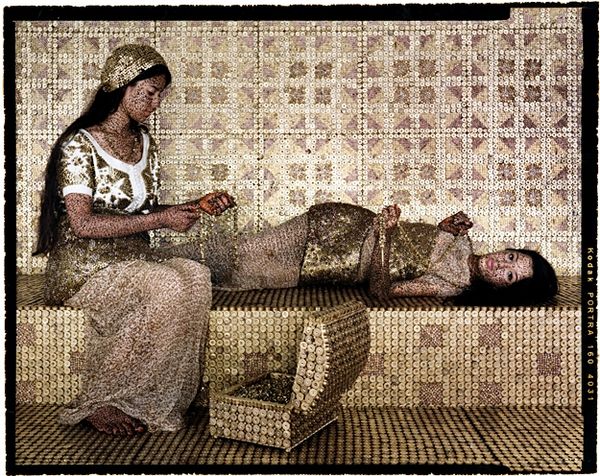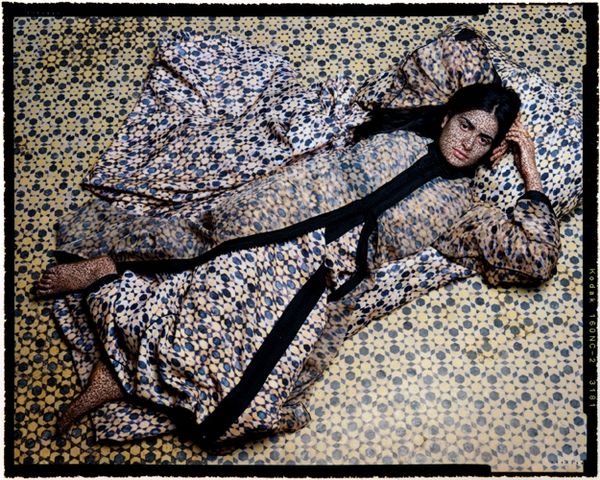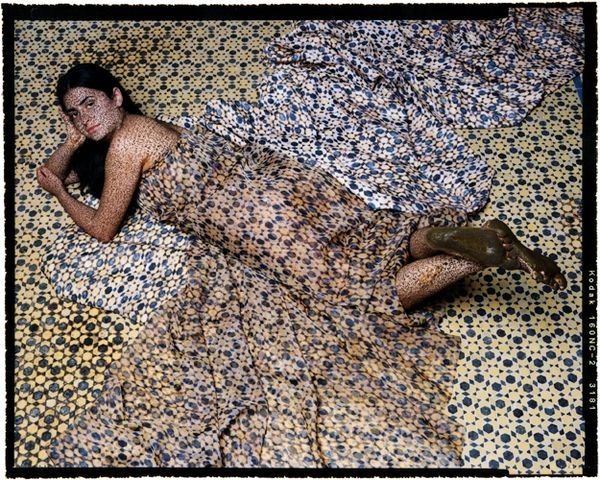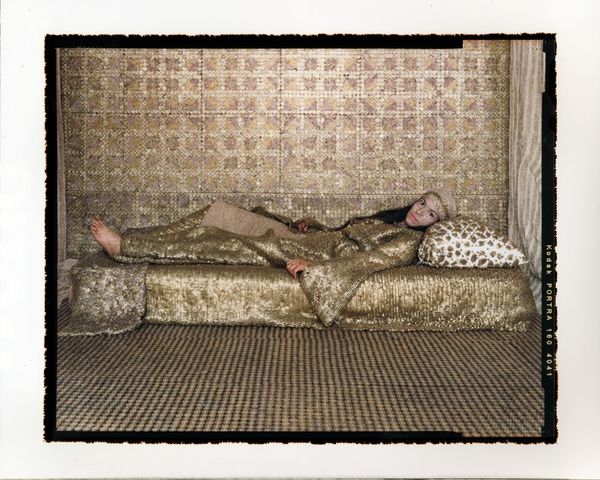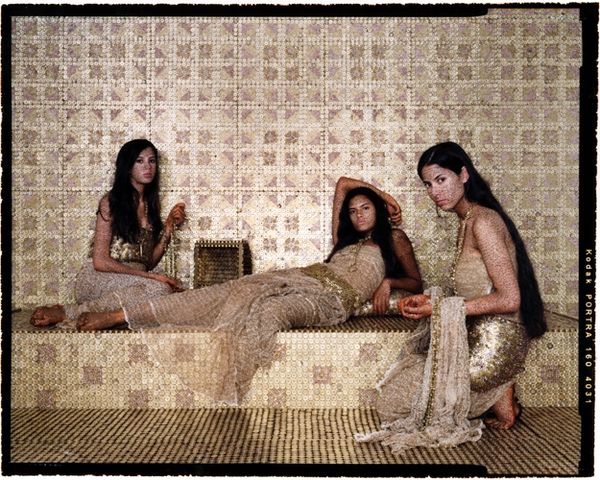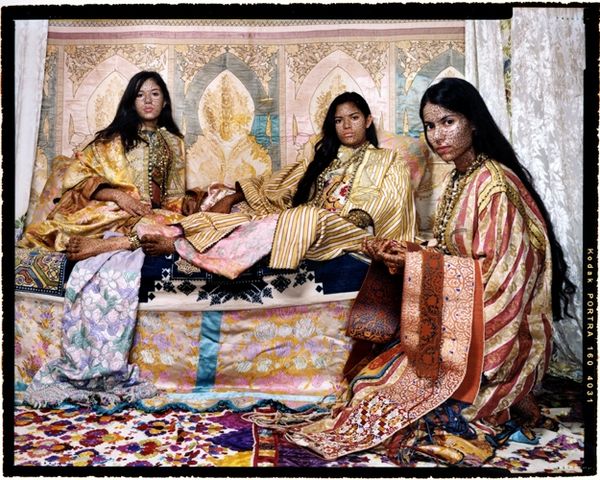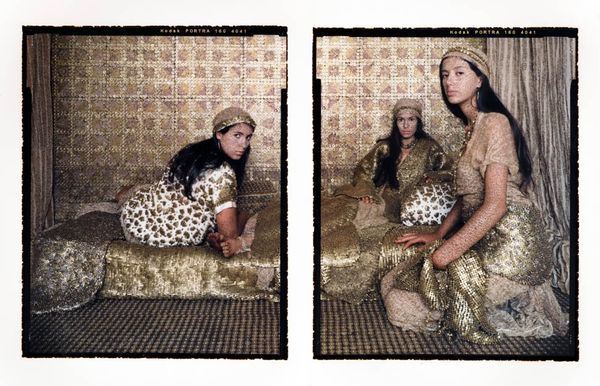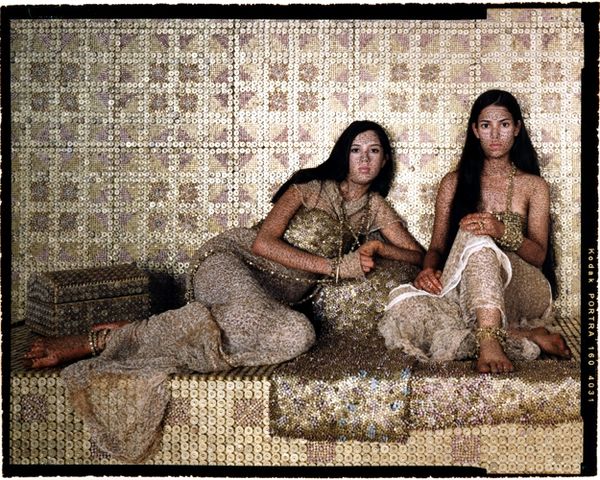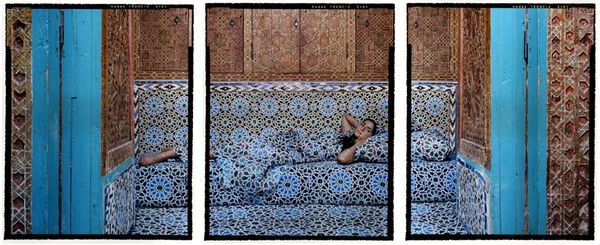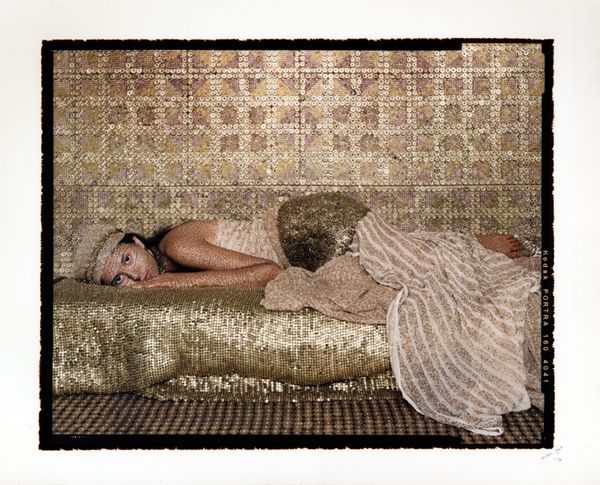
textile, photography
#
portrait
#
textile
#
photography
#
postcolonial-art
#
orientalism
#
decorative-art
#
identity-politics
#
decorative art
Copyright: Lalla Essaydi,Fair Use
Editor: We are looking at Lalla Essaydi's "Harem Revisited #45" from 2013, a photograph printed on textile. I'm struck by the patterns; they are layered upon each other to create an overwhelming density of design, and also the woman in the photograph seems almost blended in. How would you describe what’s happening in this composition? Curator: Formally, the piece operates through a sophisticated orchestration of patterns. The textiles serve not merely as background but as active participants in constructing the subject's identity. The composition itself is rigorously structured, a near-perfect rectangle, framing a space that’s both intimate and theatrical. Editor: The figure seems almost dissolved into her surroundings, a prisoner of beauty, perhaps? Curator: The figure’s placement and pose are not incidental. She is positioned centrally, but her passivity and the overwhelming presence of the textiles deny her dominance. Think about how Essaydi employs repetition and symmetry – those aren’t just aesthetic choices, they're methods of reinforcing themes. What could those themes be? Editor: Perhaps themes around restriction and confinement, if the figure blends into her surroundings it speaks to her lack of authority. It is interesting to observe how patterns become signs, operating almost like codes to decipher meaning. Curator: Exactly. Each design element, each fold and crease in the fabric, speaks volumes about cultural expectations and the lived experience. Essaydi invites us to consider how the formal properties of art can engage with profound social questions. The photograph does not provide answers but rather instigates reflection, questioning what appears on the surface. Editor: It seems there is beauty to the photograph, but the questions it poses open dialogue about social issues related to this portrayal. Curator: Yes, understanding those dynamics requires a close reading of visual syntax, and allows us to develop a language for discussing art that transcends mere subjective impressions.
Comments
No comments
Be the first to comment and join the conversation on the ultimate creative platform.
